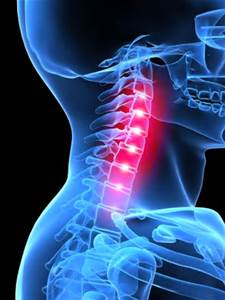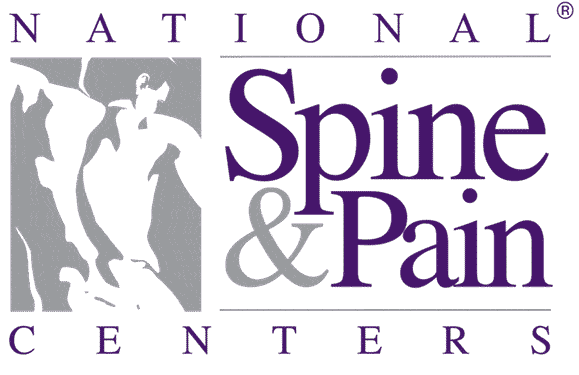
Aug 1, 2016 | Articles by Body Part, Conditions, Platelet Lysate, Prolotherapy, PRP, Regenerative Treatments, Research, Spine and Neck
Cervical spine (neck) pain is a common condition, suffered by many people. Whether it’s spinal stenosis, a disc herniation, or simply overexertion, the pain can become debilitating and lead to long term suffering. The cervical spine is a vulnerable structure that is comprised of joints and ligaments, working together to support the head. Its susceptibility to injury can result in a number of conditions causing spasm, headaches, or shooting pains. Finding the source of the pain is the first step, since damage in one area can affect many supporting systems. In the majority of cases, cortisone injections can help in the management of neck pain. In other patients, surgical intervention may be recommended. However, there are those who suffer from severe or chronic pain who have exhausted conservative treatment measures, or still have pain post surgery, and are left searching for an alternative solution.
Newly developed biological treatments have provided an opportunity for chronic pain sufferers to experience a long-lasting, natural solution to their neck pain. Regenerative treatments, such as Platelet Rich Plasma (PRP) or Platelet Lysate, contain highly concentrated growth factors from a patient’s own blood to attract repair cells and initiate the body’s healing process. In some cases, Prolotherapy, a concentrated solution of Dextrose and anesthetic can be used in conjunction with the platelet procedures, or on its own. Prolotherapy helps stimulate the body’s natural ability to strengthen ligaments and tendon surrounding the cervical spine. The regenerative treatments offered by the physicians at StemCell ARTS can offer relief to patients looking for a solution to their chronic neck pain.
Jan 2, 2014 | Knee, Platelet Lysate, Prolotherapy, PRP, Stem Cell Procedures
Pain Relief through Superior Technology
At StemCell ARTS, we often see patients who have had problems associated with knee surgery, such as a torn meniscus needing repair, surgery to correct an ACL injury or a procedure associated with osteoarthritis. Many of these patients did not experience the results they were hoping for and feel that the surgery has failed. In many cases, the surgery actually did not fail; it just did not go far enough into resolving all of the problems that the patient’s knee joint was experiencing.
Take the example of a torn meniscus surgery. The surgery may have been successful in removing the piece of meniscus that was torn, but it did nothing to address the additional instability in the knee, cartilage wear, or potential tendonitis that the patient might have. These types of issues can cause just as much knee pain as what the patient was experiencing from the initial injury.
Video: Treating Failed Knee Surgeries:
[youtube id=”AjlF-T8VZ0s” width=”600″ height=”350″]
How We Find Additional Knee Issues
The physicians at StemCell ARTS can help diagnose additional knee issues that might still exist after surgery. To confirm the existence of further knee injuries, a local anesthetic or nerve block can be administered to accurately pinpoint whether a certain area is the source of the pain. If pain is relieved, it contributes toward confirming the initial diagnosis. The final diagnosis is confirmed through a review of patient history, a physical examination and other innovative diagnostic procedures. Once diagnosed, a treatment plan, utilizing part or all of the following, can be developed to promote healing.
Stem Cell Therapy: The Process
Stem Cell therapy can be used to help complete the final stages of healing within a knee injury. Stem Cell Therapy makes use of the supply of stem cells available in the body to help repair injured and degenerated tissues. The easiest place to harvest these stem cells is from the back of the hip area, under ultrasound or x-ray guidance. This harvesting procedure is well-tolerated by patients and not considered difficult as many patients claim it is not painful.
After bone marrow blood is drawn, it is centrifuged to concentrate and purify the stem cells, as each stem cell specimen is custom designed to meet the needs of the specific injury. Utilizing either fluoroscopy or ultrasound, the stem cells are precisely injected into the injured site to improve the likelihood that stem cells will adhere to the damaged area and promote healing. After the stem cells are placed, concentrated platelets and other adjuvants are injected to stimulate the stem cells to multiply, and then transform into the repair cells needed to regenerate new cartilage. The platelets are injected again two to five days later to keep the stem cells activated and promote additional healing.
Platelet Rich Plasma
Platelets initiate tissue repair by releasing growth factors. These growth factors start the healing process by attracting cells that repair injuries, including critical stem cells. At StemCell ARTS, our Platelet Rich Plasma Therapy (PRP) intensifies this process by delivering a higher concentration of platelets. The therapy involves a small sample of the patient’s blood, placed in a centrifuge to separate the platelets from the other blood components. The concentrated PRP is then injected into problem areas such as weakened ligaments, injured joints or poor muscle attachments, thus significantly strengthening the body’s natural healing tendencies. StemCell ARTS process for PRP is much different and sets us apart from all others. Because our samples are all hand-processed, we are able to produce PRP that is free of contaminating red and white cells, which can inhibit repair. This same special process also allows us to customize the concentration and volume for each individual and each injury type. This greatly improves patient outcomes. Sometimes just a single injection of PRP will help the knee go through the final stages of repair.
Platelet Lysates
Platelets in the blood release tissue growth factors that aid in the healing process. Normally this occurs slowly over time, but a Platelet Lysate solution that is high in concentration of growth factors can be released immediately into the body. The result is a targeted, faster healing process.
Prolotherapy
Injected three to five days before the stem cells, Prolotherapy contains a solution of concentrated dextrose and a local anesthetic (steroids are not used). This Prolotherapy solution stimulates the body’s natural ability to repair damaged tissue, encouraging new growth and creating a positive environment into which the stem cells are placed.
By introducing additional growth factors, the hidden knee damage that might be present after a failed surgery can finally be encouraged to heal. These treatments can be the key to finally relieving knee pain in a way that marks a real transformation in the patient’s level of mobility and a return to normal life.
Jan 2, 2014 | Platelet Lysate, PRP, Spine and Neck
Are You Still Suffering after Back Surgery? Gain Real Control Over Pain and Promote Your Own Healing
At StemCell ARTS, we see many patients seeking further medical intervention after they’ve had back surgery; especially when the surgery fails to deliver the mobility, activity level and quality of life that they were expecting. Patients who have had spinal fusion surgery tend to fall most often into this category.
After spinal surgery, the spine will lose some mobility in the repaired area, as it has been fused. This fusing forces additional stress in the areas above and below the fused section. If the areas of increased motion are not able to handle the additional stress, they can cause further injuries
Video: Treating Back Pain Following Surgery
[youtube id=”dP4s1Cm2B9o” width=”600″ height=”350″]
In many cases, the surgery may have actually been successful, in that it did repair the one issue that it was designed to address. The problem is that other issues in the back might still be present. For example, back surgery might repair a herniated disc, but miss a torn ligament, a damaged facet joint or a sacroiliac joint. These other problems, too often, can’t be fixed with surgery. The patient will often mistakenly feel that surgery was a failure, when the real answer is that it was not the solution to their problem. Alternative types of treatment must be considered in order to resolve these remaining issues and here, at StemCell ARTS we are at the forefront of Platelet Rich Plasma (PRP) and Platelet Lysate Therapy.
Currently, there are pain-specific diagnostic tools available to determine the true sources of continued pain after back surgery. To confirm whether additional back injuries are present, a local anesthetic or nerve block can be administered to accurately pinpoint whether a specific area is the source of the patient’s pain. If their pain is relieved by nerve block, then it confirms the diagnosis that the pain was in the desensitized area. Only after conducting a thorough review of a patient’s history, a physical examination and other comprehensive testing, can a diagnosis can be reached. Once diagnosed, a treatment plan, utilizing part or all of either PRP or Platelet Lysate Therapy, can be developed in order to promote healing.
Platelet Rich Plasma
Platelets initiate tissue repair by releasing growth factors. These growth factors start the healing process by attracting other cells that also repair, including critical stem cells. Platelet Rich Plasma therapy (PRP) intensifies this process by delivering a high concentration of platelets. This therapy involves a small sample of the patient’s blood being placed in a centrifuge to separate the platelets from other blood components. The concentrated PRP is then injected into problem areas whether they are weakened ligaments, injured joints or poor muscle attachments. The process significantly strengthens the body’s own natural healing process. StemCell ARTS’ system for deriving PRP is much different than other PRP providers and sets us far apart. Because our samples are all hand-processed, we are able to produce PRP that is free of contaminating red and white cells, which can inhibit the repair process. This same innovative process also allows us to customize the concentration and volume for each individual and each injury type.
Platelet Lysates
In certain cases, a patient may have residual nerve pain. In those isolated cases, we can apply a Platelet Lysate solution, as it is a wonderful healing agent for nerves. Platelets in the blood release powerful tissue growth factors that aid in the healing process. Normally, healing occurs naturally over time, but through the creation of a Platelet Lysate solution, a high concentration of growth factors can be released immediately into the injured or damaged area. At StemCell ARTS, we inject the solution directly into the spinal canal, thus allowing the nerves to return to their original integrity that they were before they were after they’ve been traumatized from the initial injury. Studies show that these Platelet Lysate injections can work better and longer than Epidural Steroid injections.
The potential net result of either PRP or Platelet Lysate Therapy has proven to contribute to a significant improvement in the residual issues that a patient can have after surgery, and a return to a full quality of life and previous range of activities can be expected.

